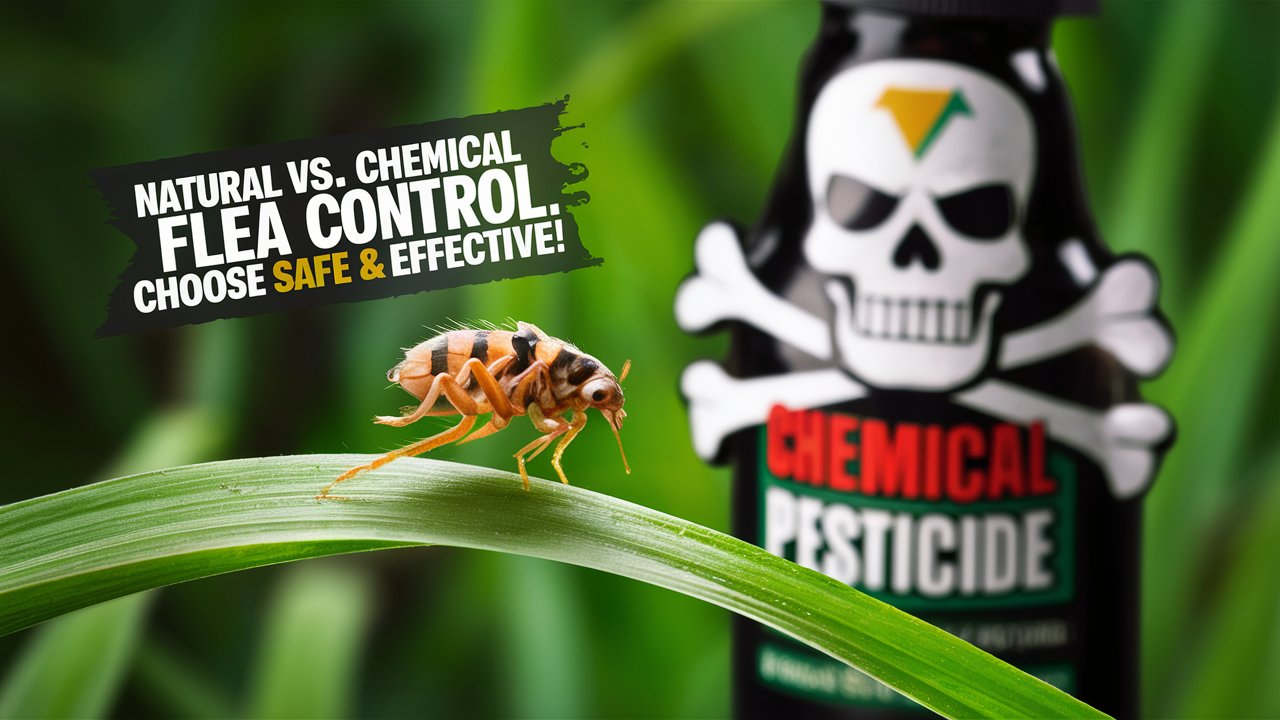Safe and non-toxic tick treatment options for pets
Ticks can be a pet owner’s worst nightmare. These tiny blood-sucking parasites not only cause discomfort and irritation to your beloved companion but can also transmit a variety of serious diseases, some of which can be life-threatening. While traditional flea and tick medications are undeniably effective, many pet owners are increasingly seeking natural alternatives.
This comprehensive guide dives deep into the world of non-toxic tick treatments for pets. We’ll explore various methods, discuss their effectiveness, delve into safety considerations, and guide you through creating a multi-pronged defense strategy to keep those pesky ticks at bay. Whether you’re a concerned caregiver prioritizing your pet’s health, an eco-conscious companion seeking environmentally friendly solutions, or a busy but loving owner looking for convenient alternatives, this guide equips you with the knowledge and strategies to protect your furry friend naturally.
Looking for safe and effective natural tick prevention products for your pet? Check out our top recommended products at Poppayai.com
Non-Toxic Tick Treatments: Exploring the Options and Going Beyond the Basics
While traditional flea and tick medications offer a high level of protection against ticks, natural alternatives can be a viable option for some pet owners. However, it’s crucial to understand that natural methods may not be as universally effective as prescribed medications, especially in high-tick environments.
Here’s a comprehensive breakdown of popular non-toxic tick treatments for pets
- Essential Oils: Certain essential oils, like cedarwood, citronella, lemongrass, and lavender, possess properties that can potentially repel ticks. These oils contain volatile organic compounds (VOCs) that disrupt the nervous system of ticks, making them less attracted to your pet. However, extreme caution is necessary when using essential oils on pets.
- Safety Considerations: Essential oils can be highly toxic to pets if used incorrectly. They can cause skin irritation, respiratory problems, and even neurological issues.
- Application: Never apply essential oils directly to your pet’s fur. Always dilute them in a carrier oil like coconut oil at a safe concentration (consult a veterinarian for proper dilution ratios specific to your pet’s age, weight, and health status).
- Limitations: Essential oils evaporate quickly, requiring frequent reapplication, especially after your pet gets wet or spends time outdoors.
- Diatomaceous Earth (DE): This naturally occurring powder is made from fossilized algae and can be a valuable tool in your tick prevention arsenal. DE works by dehydrating ticks through its microscopic, abrasive particles. However, using DE for tick control requires specific considerations.
- Types of DE: There are two main types of DE – food-grade and pool-grade. Only use food-grade DE for pets, as pool-grade DE can be harmful if inhaled.
- Application: Lightly dust your pet’s bedding and surrounding areas with food-grade DE. Avoid direct contact with your pet’s eyes and respiratory system. Consider wearing a mask when applying DE to minimize inhalation risks.
- Limitations: DE can lose its effectiveness over time, especially when exposed to moisture. Additionally, the abrasive nature of DE might irritate your pet’s skin, so a patch test on a small area is recommended before full application.
- Beneficial Nematodes: These microscopic worms are nature’s answer to pest control. They are natural predators of fleas and tick larvae in the soil. Beneficial nematodes are safe for pets and the environment, making them an attractive option for eco-conscious pet owners. However, their effectiveness depends on various factors.
- Application: Beneficial nematodes need to be applied to moist soil at the right temperature for optimal results. This can be a challenge in certain climates or during specific seasons.
- Limitations: Nematodes primarily target tick larvae in the soil, not adult ticks that have already attached to your pet. Additionally, their effectiveness can vary depending on the specific type of nematodes used and the local tick population.
- Apple Cider Vinegar (ACV): While some pet owners swear by ACV as a natural tick repellent, the research on its effectiveness is inconclusive. ACV contains acetic acid, which some believe may have a deterrent effect on ticks. However, more scientific studies are needed to confirm this claim.
- Application: ACV can be used as a safe and natural topical spray (diluted with water) to help soothe irritated skin after a tick bite. Consult your veterinarian before using ACV on your pet for tick prevention purposes.
- Limitations: The effectiveness of ACV as a tick repellent remains unproven. Additionally, the vinegar scent might not be pleasant for your pet.
- Daily Physical Checks: Regardless of the natural methods you choose, regular physical checks are crucial in protecting your pet from ticks. Early detection and removal of ticks are essential to minimize the risk of tick-borne diseases.
- Frequency: Conduct thorough checks on your pet’s fur, especially after spending time outdoors in tick-infested areas. Focus on areas like the ears, paws, belly, neck, and around the tail base, where ticks are more likely to attach.
- Removal: If you find a tick on your pet, remove it gently with a tick removal tool following the proper procedure. Avoid squeezing the tick’s body, as this can increase the risk of disease transmission.
Important Considerations for Using Natural Tick Treatments
- Effectiveness: Natural tick treatments may not be as effective as traditional medications, especially in areas with high tick populations. It’s crucial to weigh the benefits and drawbacks based on your pet’s risk factors and your environment’s tick prevalence.
- Safety: Always consult your veterinarian before using any new product on your pet, even natural ones. Certain essential oils or homemade concoctions can be toxic to pets if not used correctly.
- Lifestyle: Consider your lifestyle and your pet’s needs. Some natural solutions require more frequent application than traditional medications. Be realistic about the time commitment involved in maintaining a consistent natural tick prevention routine.
5,000+ People Saw Related Offers
- Pamper your pet! Discover natural flea & tick control, organic food, and more.
- Healthy pets start here! Shop organic food, natural supplements, & eco-friendly toys.
- Give your pet the best! Explore our range of natural products & accessories.
- Protect your furry friend! Find effective flea & tick control solutions now.
- Nourish your pet naturally! Discover delicious organic food options.
- Boost your pet’s health! Try our natural supplements for optimal wellness.
- Happy pets, happy you! Shop eco-friendly toys & accessories today.
Sponsored Contents ⓘ | Advertise Now
Creating a Natural Tick Defense Routine for Your Pet
Here’s how you can craft a natural tick defense routine for your pet, incorporating the methods discussed earlier:
Step 1: Assess Your Needs and Risks
- Climate: Consider your location’s tick prevalence. Ticks are more active in warm, humid climates.
- Pet’s Lifestyle: If your pet spends a lot of time outdoors, especially in high-risk areas, a more robust approach might be necessary.
- Your Preferences: Evaluate your comfort level with application frequency and commitment required for natural methods.
Step 2: Implement Preventative Measures
- Habitat Modification: Maintain a tick-free yard by keeping grass short, removing leaf piles, and creating a barrier between your lawn and wooded areas.
- Regular Grooming: Brush your pet’s fur daily, paying close attention to areas like the ears, paws, belly, and neck, where ticks often attach.
- Diet: Provide your pet with a well-balanced diet rich in omega-3 fatty acids, which can contribute to a healthy skin and coat, potentially making them less susceptible to tick bites.
Step 3: Choose Your Natural Repellents
- Essential Oils: Dilute a few drops of cedarwood, citronella, lemongrass, or lavender oil in a carrier oil like coconut oil. Apply sparingly to your pet’s fur, avoiding eyes, nose, and mouth. Caution: Never use essential oils on young pets, pregnant or nursing animals, or pets with skin sensitivities.
- Apple Cider Vinegar Spray: Mix equal parts water and apple cider vinegar in a spray bottle. Lightly mist your pet’s fur, avoiding eyes and open wounds.
Step 4: Create a Consistent Routine
- Frequency: Depending on the chosen method, apply natural repellents daily or every few days.
- Thoroughness: Ensure complete coverage, focusing on areas where ticks tend to gather.
- Post-Outdoor Activities: After spending time outdoors, especially in high-risk areas, thoroughly check your pet for ticks.
Step 5: Monitor and Adapt
- Observe: Keep an eye on your pet’s behavior for any signs of irritation caused by the natural repellents.
- Effectiveness: If you notice ticks on your pet despite using natural methods, consult your veterinarian. They can assess the risk factors and recommend a stronger defense strategy.
Remember: Consistency is key! Regularly applying natural repellents and maintaining a tick-free environment will significantly reduce the risk of tick infestations on your pet.
Looking for safe and effective natural tick prevention products for your pet? Check out our top recommended products at Poppayai.com
5,000+ People Saw Related Offers
- Pamper your pet! Discover natural flea & tick control, organic food, and more.
- Healthy pets start here! Shop organic food, natural supplements, & eco-friendly toys.
- Give your pet the best! Explore our range of natural products & accessories.
- Protect your furry friend! Find effective flea & tick control solutions now.
- Nourish your pet naturally! Discover delicious organic food options.
- Boost your pet’s health! Try our natural supplements for optimal wellness.
- Happy pets, happy you! Shop eco-friendly toys & accessories today.
Sponsored Contents ⓘ | Advertise Now










This is such a valuable resource! I’ve been hesitant to use harsh chemicals on my cat, Luna, but I was worried about ticks in our backyard. The information on safe essential oils and daily checks is fantastic. I feel much more confident now about keeping Luna safe naturally. Thank you!
As a dog owner who loves spending time outdoors with my furry companion, Charlie, this guide is a lifesaver! I appreciate the in-depth explanation of different natural tick treatments and the breakdown of their effectiveness. I especially liked the tip about using a tick removal tool for safe removal. Thanks for sharing this informative post!